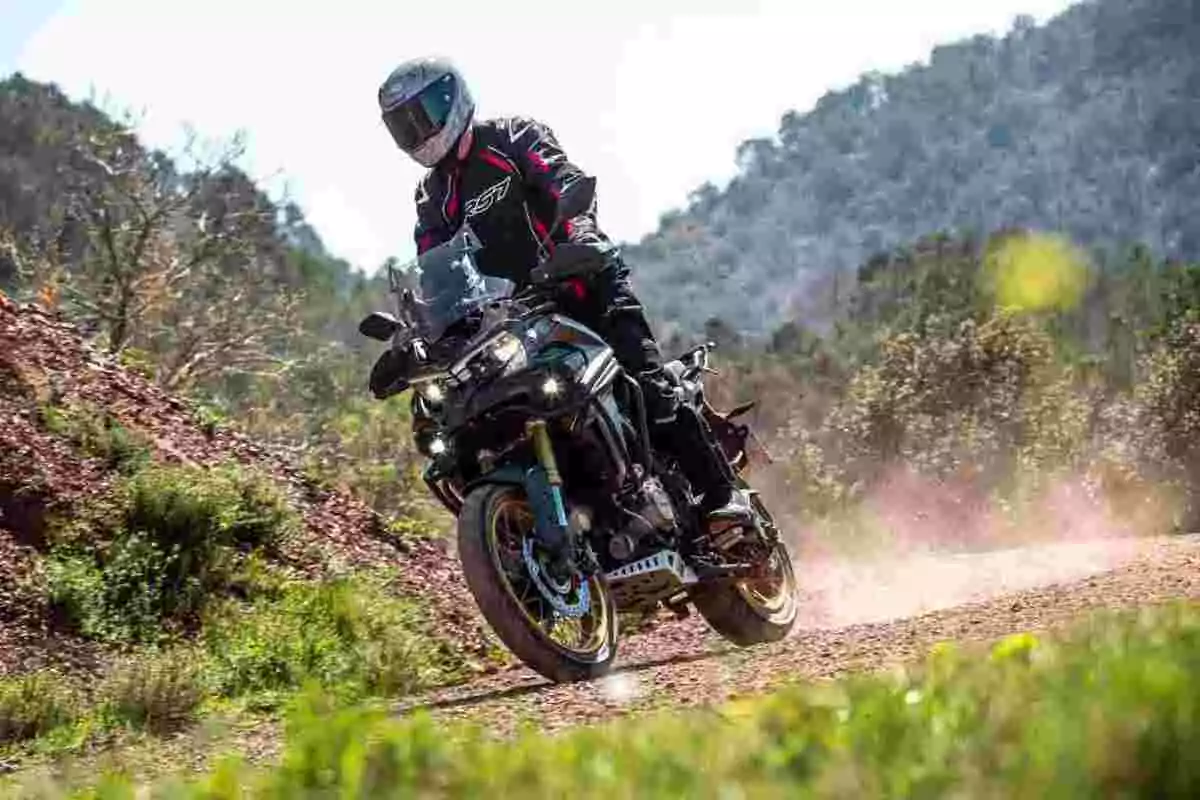
You have to carry them on your trail bike when you ride off-road: we're warning you
What to take on your trail bike to handle any unforeseen event in the field
It may sound a bit exaggerated, but it isn't. Heading out without it for your trail bike is like setting off on a journey without water. Nothing may happen... or you might end up regretting it.
We're not talking about a matter of life or death. But we are talking about avoiding getting stranded in the middle of a trail waiting for the tow truck or trailer to arrive.
We're referring to a good tool bag. With a proper selection of tools and accessories, you'll be able to solve most common problems and keep going.
The first tip is that if you go out with company, not everyone needs to carry the same things. Distribute the gear among group members, so each bike will carry less weight and be easier to handle in tricky areas.
However, make sure that, by adding up what each person carries, you have all the tools and accessories needed to deal with any unexpected situation.
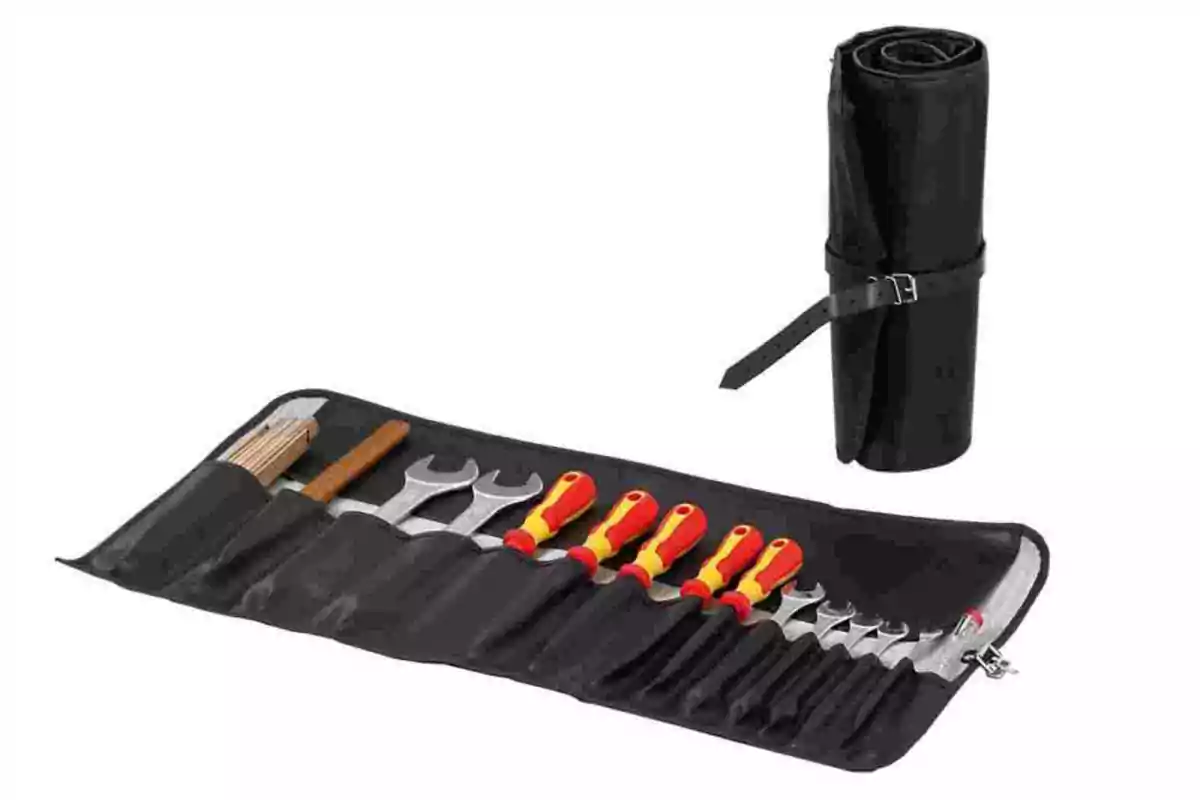
Basic tool
Open-end wrenches are essential. Try to include the most common sizes: 8, 10, 12... up to 19 mm (0.31, 0.39, 0.47... up to 0.75 in.) or better yet, a pair of quality adjustable wrenches. They take up less space and can work.
Combination wrenches or "multi-tool" formats also work well. Also include the most common Allen wrenches, a flathead and a Phillips screwdriver of medium size, and a pair of pliers, preferably with wire cutters.
Look for compact, lightweight kits and folding tools, like those sold in cycling stores.
Those multi-tools with open-end wrenches, another with Allen wrenches, and a third with pliers, wire cutters, and screwdrivers make a very useful trio.
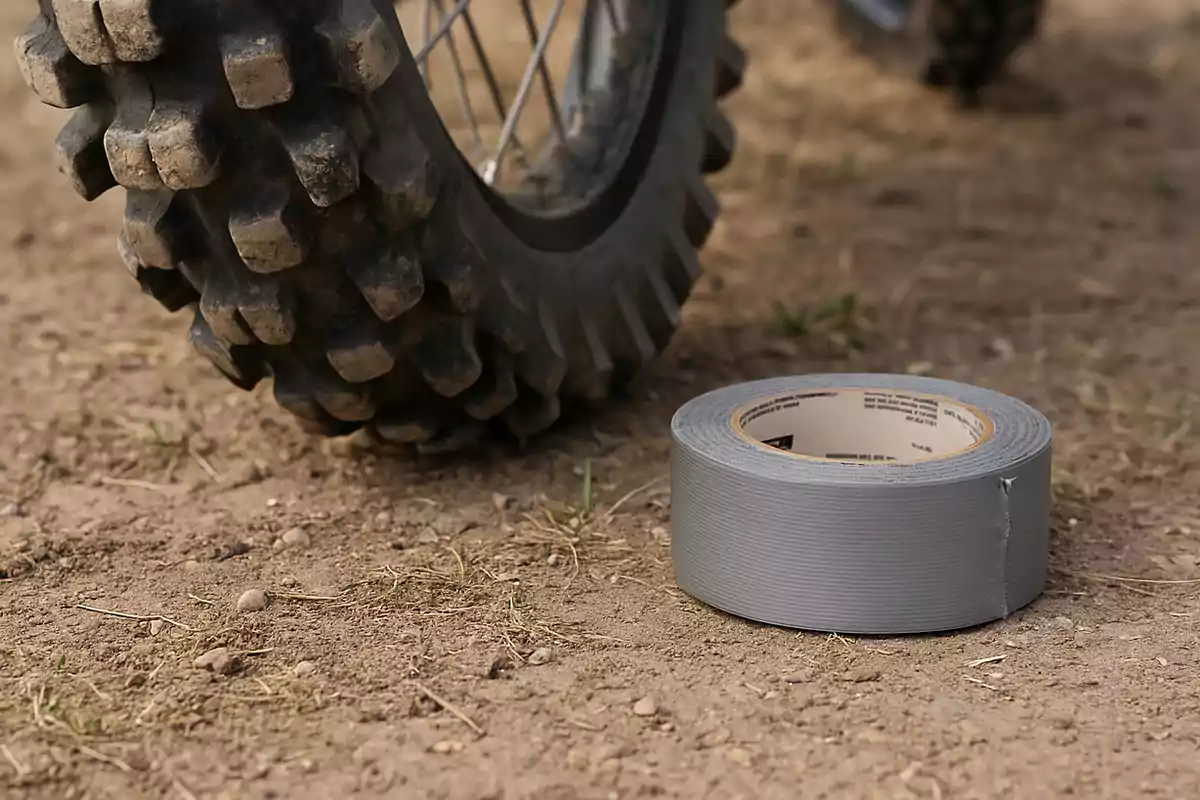
Duct tape
Few things save more situations than a good piece of duct tape. It's useful for securing anything from a helmet visor that's lost screws to broken plastics or a loose side stand.
Don't carry the whole roll, there are shorter formats and, if you want to save even more space, wrap a few yards (meters) around a thin stick.
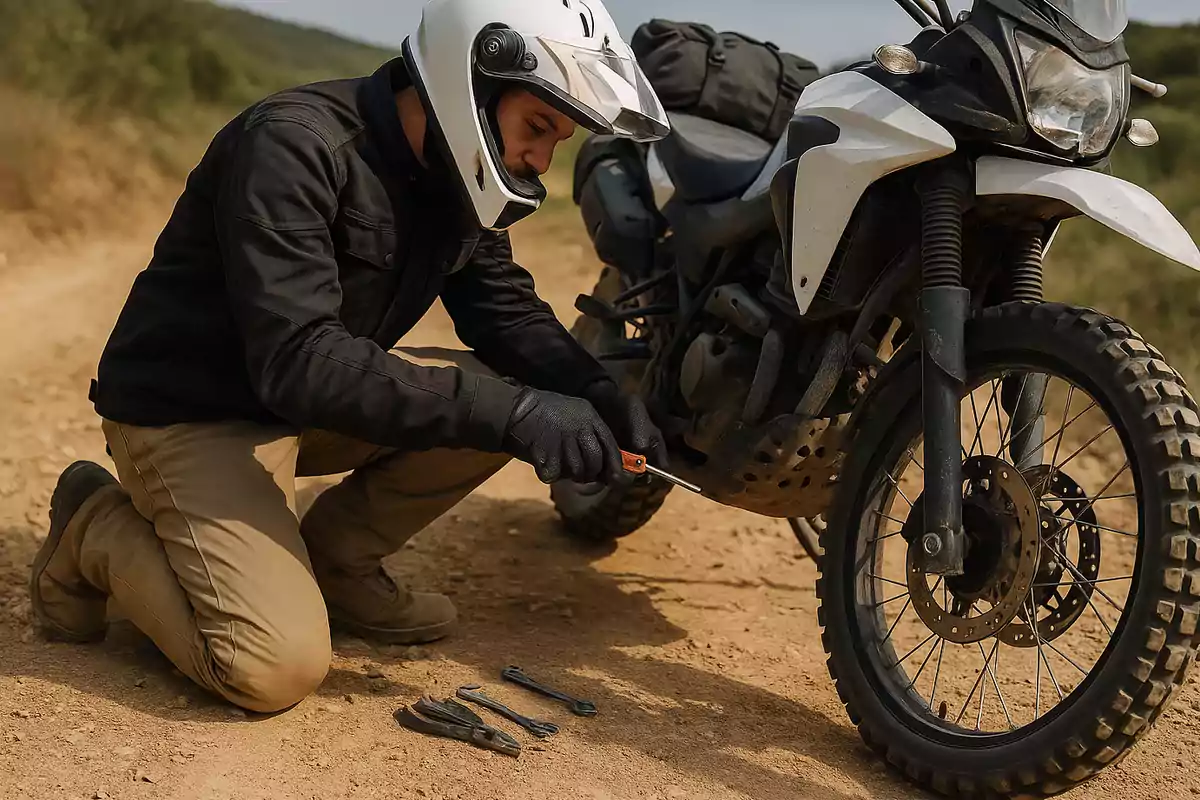
Wire
Another temporary solution for securing loose parts or improvising repairs.
A couple of yards (meters) is enough for most cases, and you can always make a small coil that will hardly take up any space.
It'll work, for example, to "stitch" a broken fender or secure greasy or dirty parts that could come loose with tape.
Plastic zip ties
Lightweight, affordable, and very practical. A couple of strong zip ties can save you from an annoying breakdown in the middle of nowhere. They take up no space in the bag and, when you need them, they're irreplaceable.
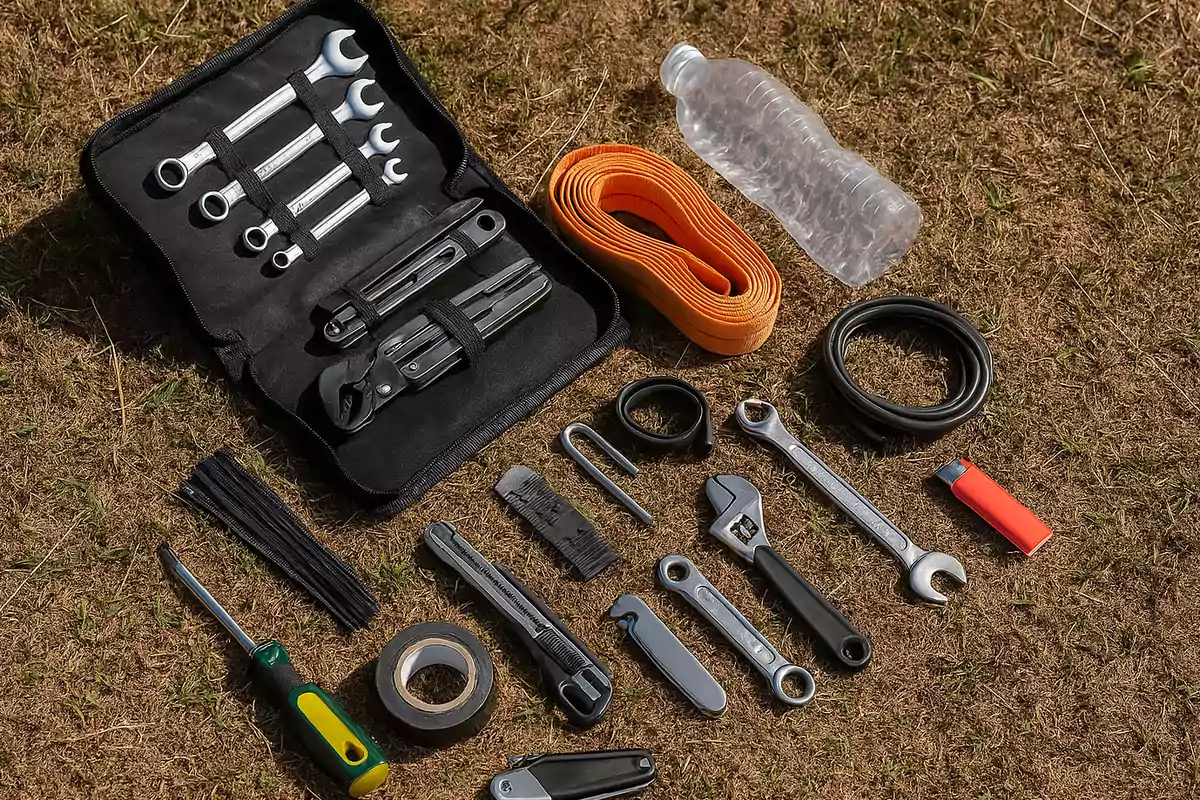
Fuel hose
If the hose running from the tank to the carburetor breaks, a piece of hose will get you out of trouble.
It also works for transferring fuel from one bike to another using a bottle or by taking advantage of a slope.
It can even temporarily protect an electrical wire that has lost its insulation.
Inner tube rubber
A piece of tire inner tube cut into strips serves as an elastic fastener for headlights, exhausts, or parts that need flexibility.
You can also use it to tie down luggage or items that need some flexibility.
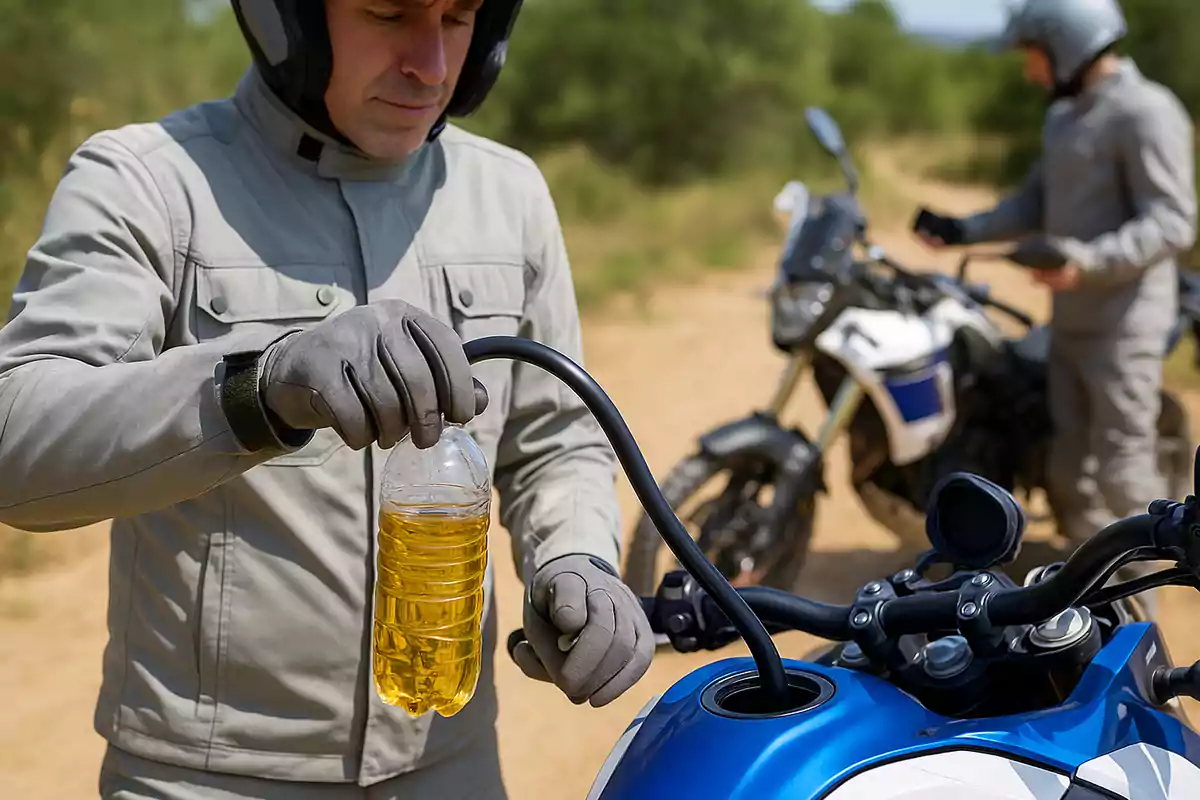
Saw blade
It's not always considered, but being able to cut something in an emergency can be crucial.
A piece of metal saw blade, with one end taped to prevent cuts, is lightweight, takes up little space, and can cut almost anything.
Long strap
At least 16 ft. (5 meters) long. From tying down luggage or large items to towing a companion or getting to a place where you can wait for assistance.
It's an accessory that weighs almost nothing and can keep your trip from ending prematurely.
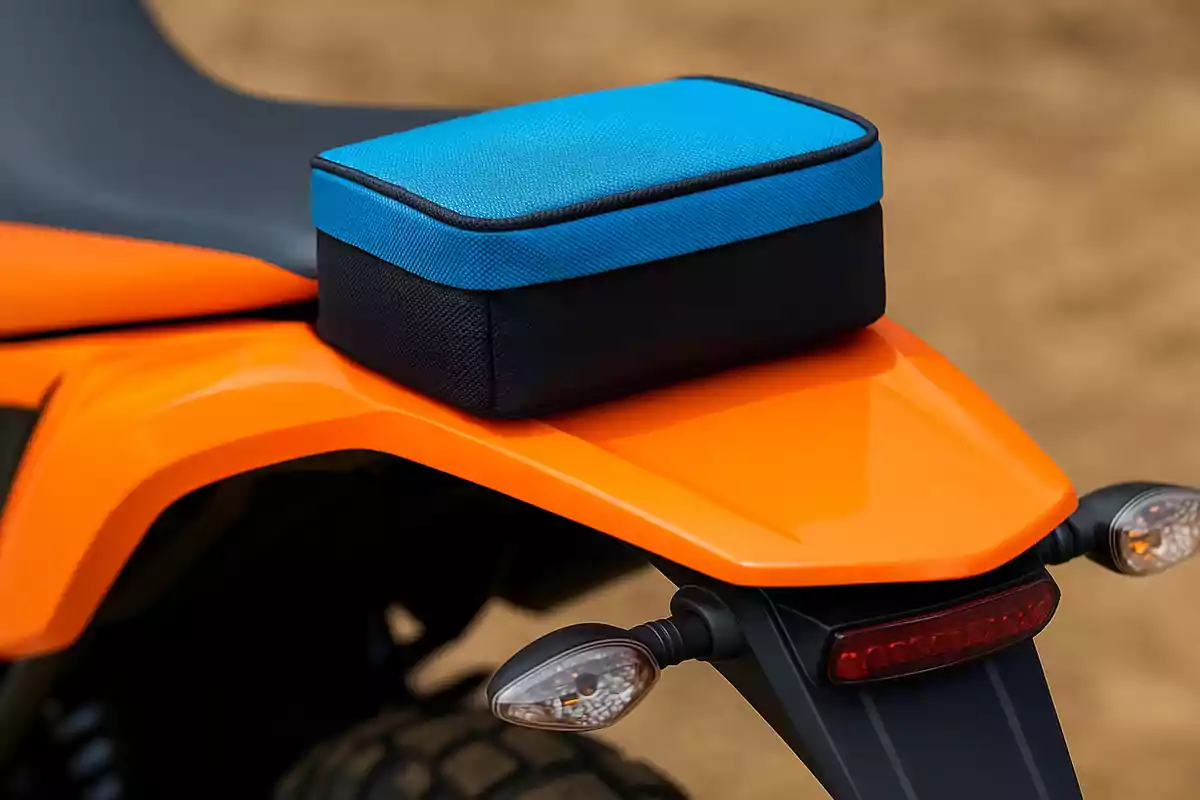
Lighter
Useful for melting plastics, making holes, or heating tools. If there are forgetful smokers in the group, they'll thank you.
Folded plastic bottle
A small bottle, less than half a liter (17 fl. oz.), folded and closed with its cap.
It stays folded, takes up almost no space, and can be used to transfer gasoline from one bike to another, oil in an emergency, or coolant. Much more useful than you think.

More than just the basics
This list covers the essentials, but you should add lightweight spares like a spark plug, compressed air bottles, chain links, or cables.
These last ones, except for the spark plug, can be fixed to the bike without taking up space in the bag.
As for large parts like levers or pedals, consider whether it's worth carrying them: they take up space, add weight, and aren't always essential.
With care, you can get home using only one brake or push-starting and shifting without a clutch.
Even if the shift pedal breaks, with pliers you can leave it in gear and keep moving.
The accessory that should never be missing
Finally, never forget the most important accessory: your cell phone. Always carry it with you, not on the bike, so you can call for help if something goes wrong.

More posts: